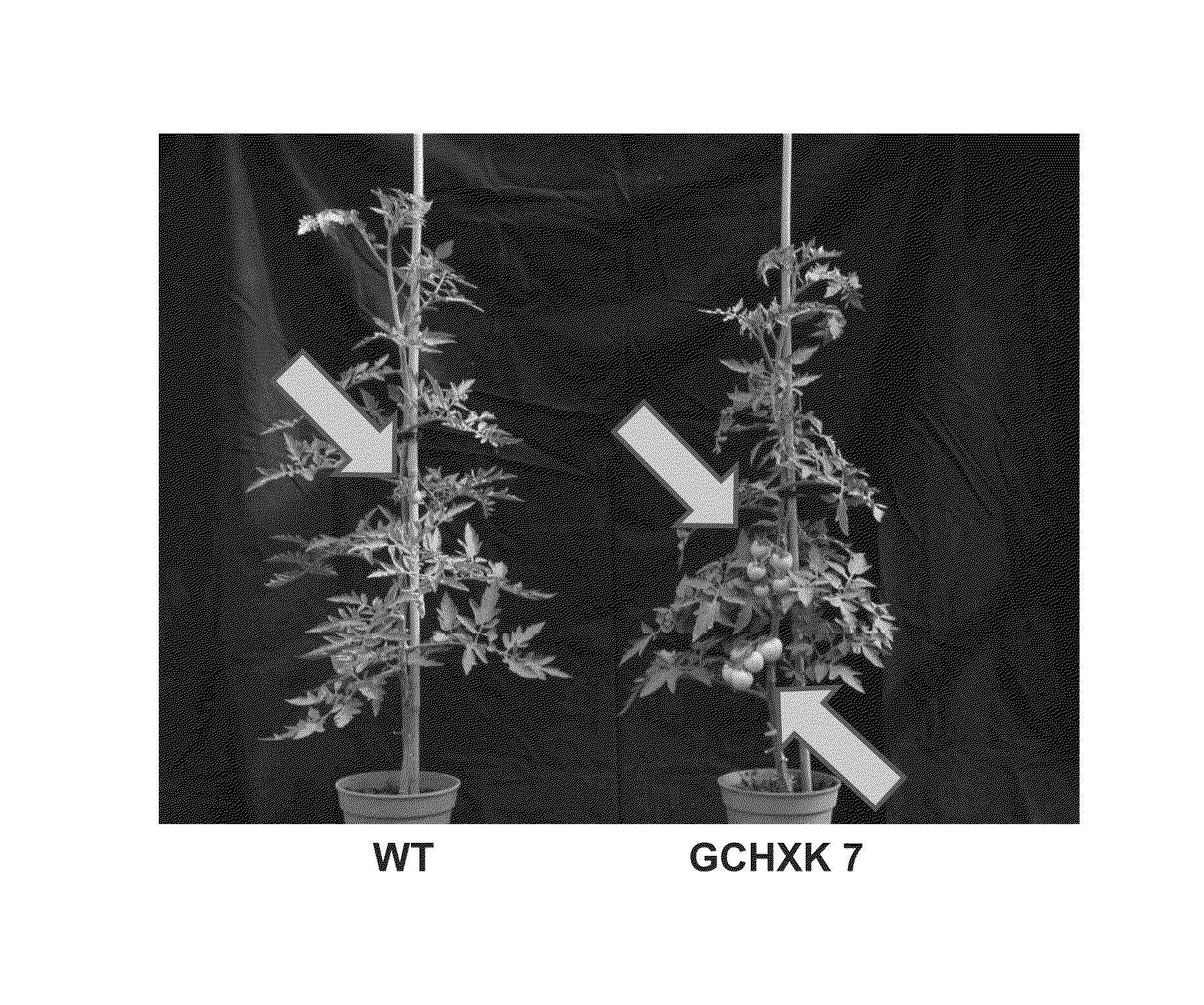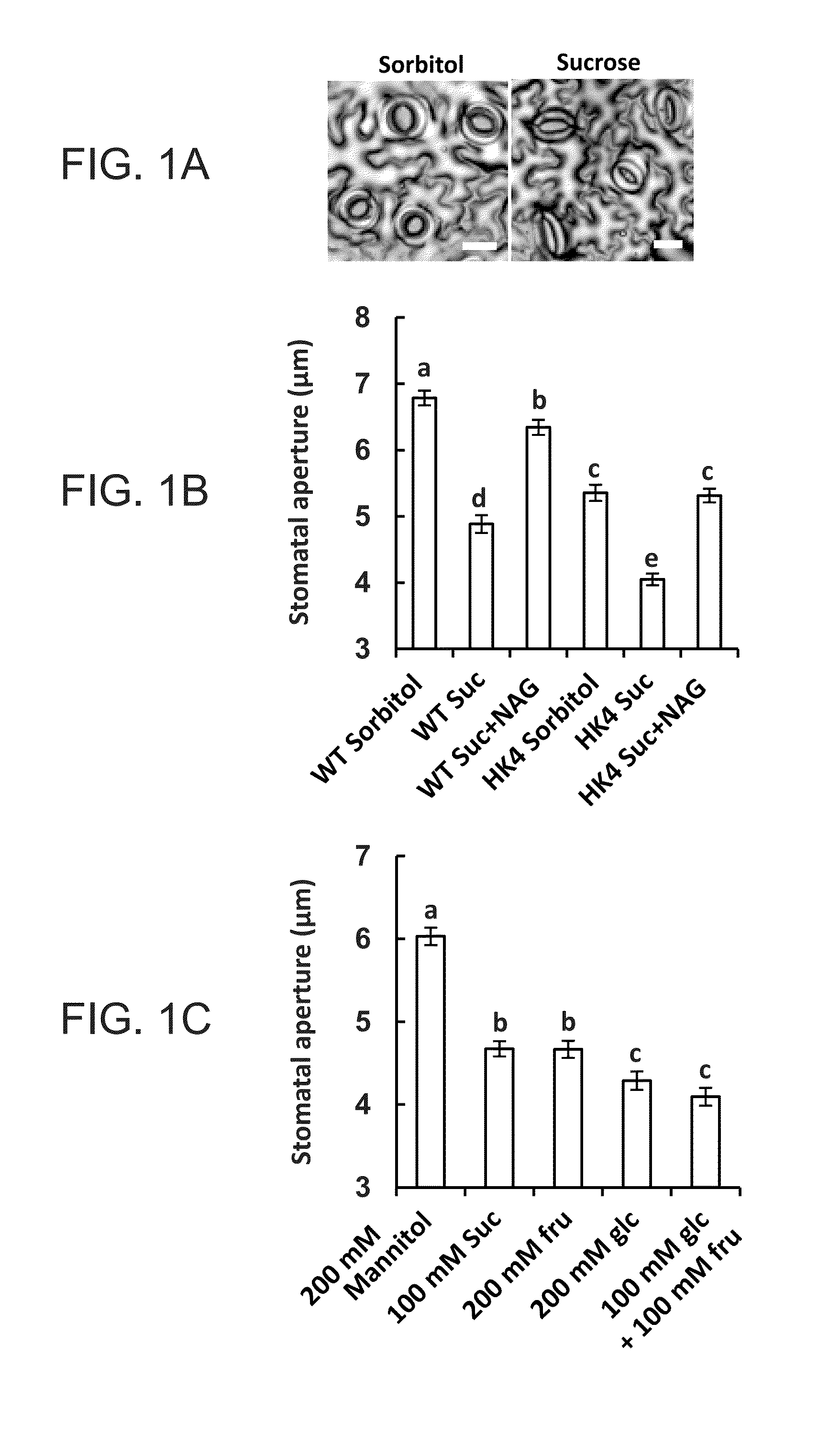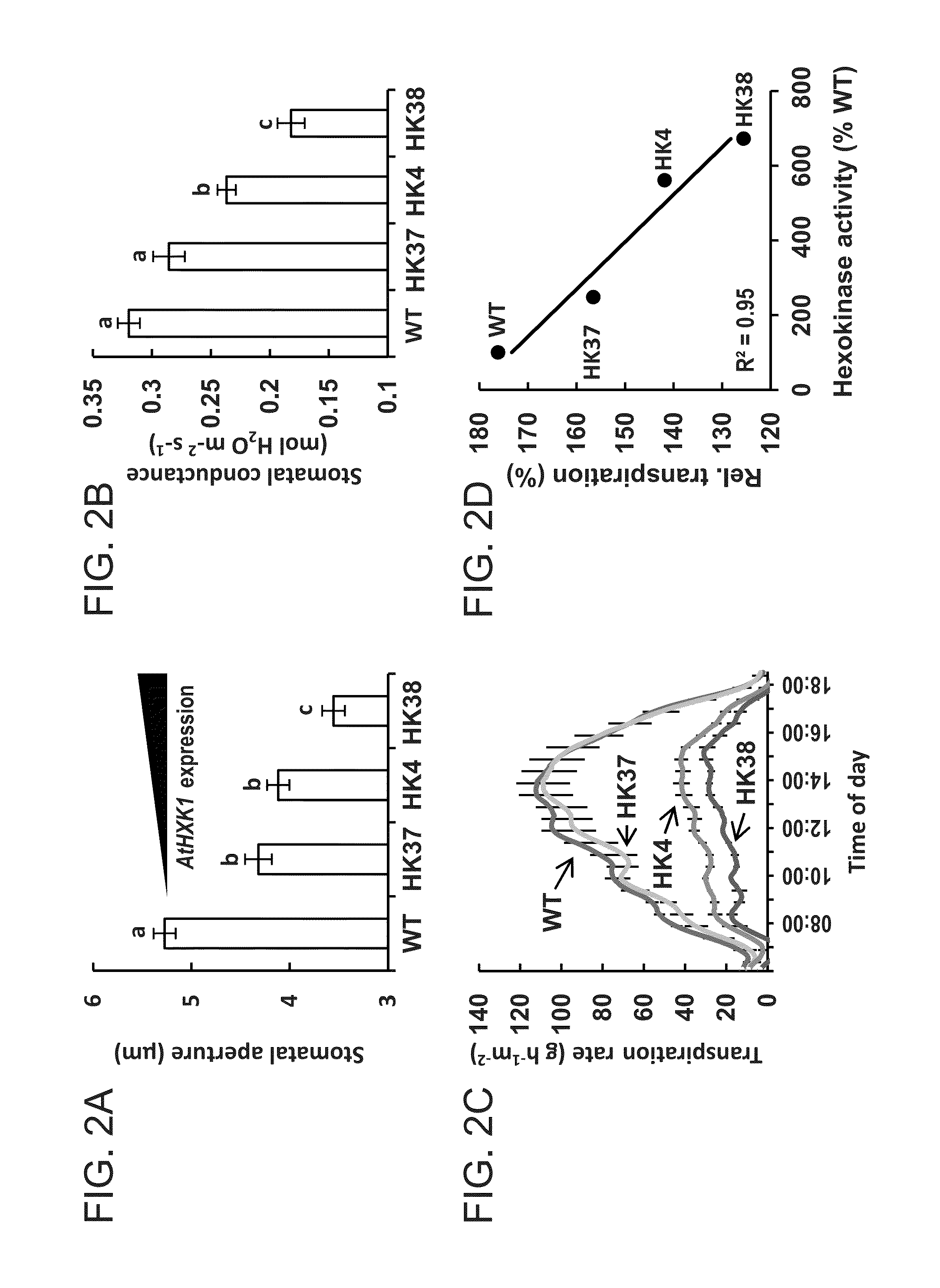Methods of modulating stomata conductance and plant expression constructs for executing same
a technology of which is applied in the field of modulating stomata conductance and plant expression constructs for executing same, can solve the problems of crop loss and serious water scarcity, and achieve the effects of increasing water use efficiency of plants, decreasing plant stomata conductance, and increasing plant stomata conductan
- Summary
- Abstract
- Description
- Claims
- Application Information
AI Technical Summary
Benefits of technology
Problems solved by technology
Method used
Image
Examples
example 1
Materials and Methods
[0207]Plant Material and Growth Conditions
[0208]Experiments were conducted using WT tomato (Solanum lycopersicum cv. MP-1), isogenic independent transgenic homozygous tomato lines expressing different levels of the Arabidopsis AtHXK1 (35S::AtHXK1) [as previously described by Dai et al. (1999)], isogenic transgenic homozygous lines with antisense suppression of the tomato LeHXK1, 2&3 genes, isogenic transgenic homozygous lines expressing GFP or AtHXK1 under the control of the KST1 promoter, and the ABA-deficient mutant Sitiens (Dai et al., 1999) (S. lycopersicum cv. Ailsa Craig).
[0209]Independent antisense-HXK tomato lines, αHK1 and αHK2, were generated following transformation of MP-1 with an antisense construct of StHXK1 (X94302) expressed under the 35S promoter. The potato StHXK1 shares over 80% sequence identity with LeHXK1, 2&3 and conferred suppression of LeHXK1, 2&3 (FIG. 4A). Arabidopsis (Col.) and tomato (MP-1) lines that express GFP or AtHXK1 specifical...
example 2
Sucrose Stimulates Stomatal Closure
[0235]To examine the effect of Suc on stomata, intact wild-type (WT) tomato leaflets were immersed in artificial apoplastic solutions (Wilkinson and Davies, 1997) containing either 100 mM Suc or 100 mM sorbitol, a non-metabolic sugar used as an osmotic control, and measured stomatal aperture. Suc decreased stomatal aperture size by 29% relative to sorbitol (FIGS. 1A, B). Sucrose is a disaccharide that has to be cleaved. It may be cleaved by cell wall (apoplastic) invertases, yielding glucose (Glc) and fructose (Fru) in equal proportions (Granot, 2007) and resulting in additional extracellular osmolarities approaching 200 mOsm / L, as compared to the 100 mOsm / L of the original Suc added. We, therefore, compared the effects of 100 mM sucrose, 100 mM Glc+100 mM Fru and 200 mM Glc or Fru with the effect of 200 mM mannitol, which was used as an additional osmotic control. All of the sugar combinations decreased the size of stomatal apertures, as compared ...
example 3
Sucrose Stimulates Stomatal Closure Via Hexokinase
[0236]Sucrose may be cleaved by either apoplastic (extracellular) invertase or enter the cells via sucrose transporters and then be cleaved by intracellular sucrose-cleaving enzymes to yield the hexoses Glc and Fru. The hexoses Glc and Fru must be phosphorylated by hexose-phosphorylating enzymes (Granot, 2007). In plants, hexokinases (HXK) are the only enzymes that can phosphorylate Glc and may also phosphorylate Fru (Granot, 2007, 2008). HXKs are intracellular enzymes known to play both kinetic and sugar-signaling roles (Rolland et al., 2006). To examine whether Suc stimulates stomatal closure via HXK, the effect of Suc was tested in the presence of N-acetyl glucosamine (NAG), an efficient inhibitor of HXK activity (Hofmann and Roitsch, 2000). NAG almost completely abolished the effect of Suc and prevented stomatal closure, supporting a role for HXK in the regulation of stomatal closure (FIG. 1B).
PUM
| Property | Measurement | Unit |
|---|---|---|
| time | aaaaa | aaaaa |
| humidity | aaaaa | aaaaa |
| temperatures | aaaaa | aaaaa |
Abstract
Description
Claims
Application Information
 Login to View More
Login to View More - R&D
- Intellectual Property
- Life Sciences
- Materials
- Tech Scout
- Unparalleled Data Quality
- Higher Quality Content
- 60% Fewer Hallucinations
Browse by: Latest US Patents, China's latest patents, Technical Efficacy Thesaurus, Application Domain, Technology Topic, Popular Technical Reports.
© 2025 PatSnap. All rights reserved.Legal|Privacy policy|Modern Slavery Act Transparency Statement|Sitemap|About US| Contact US: help@patsnap.com



